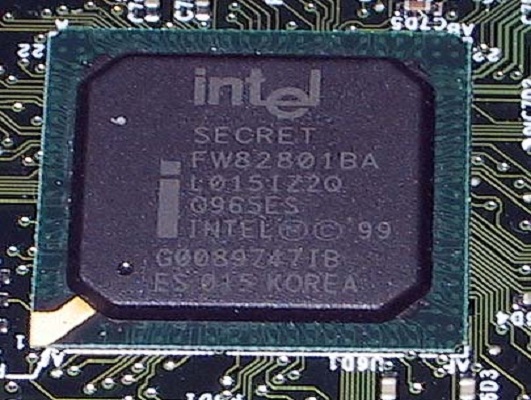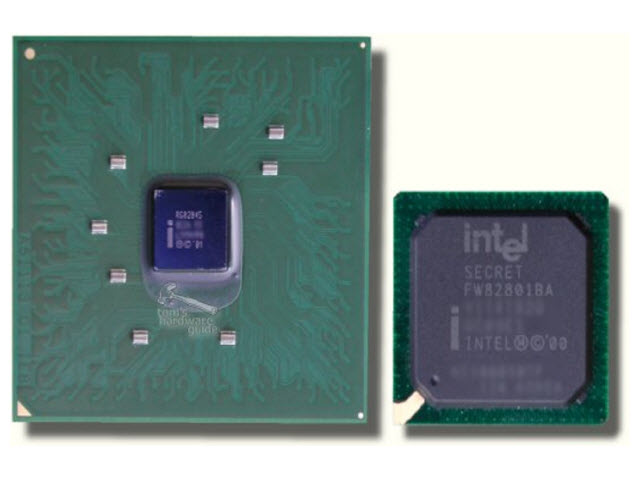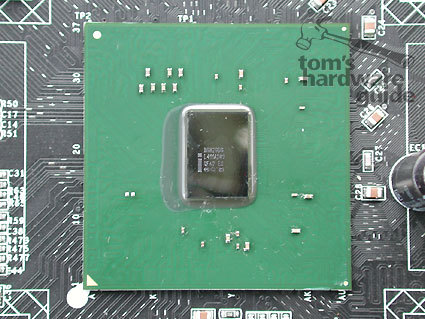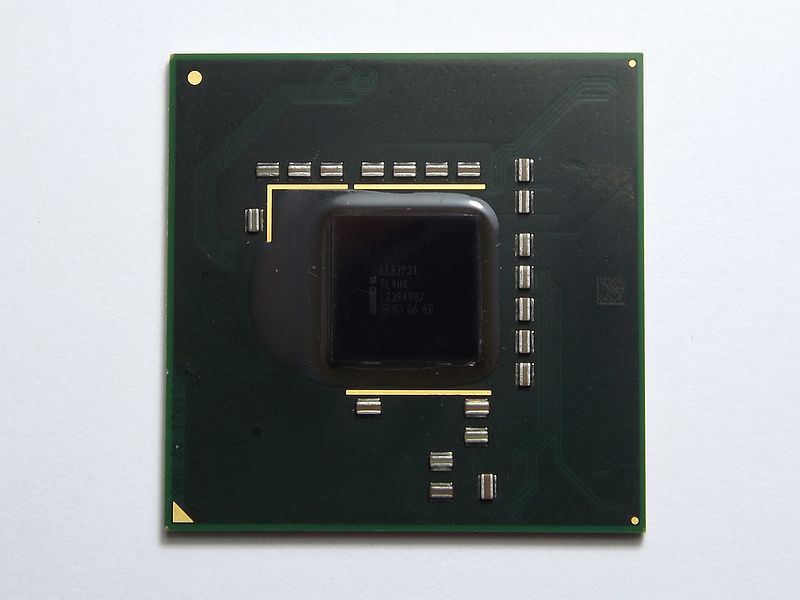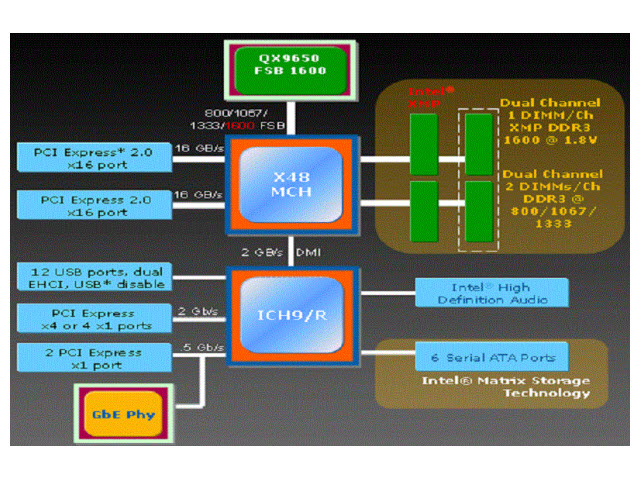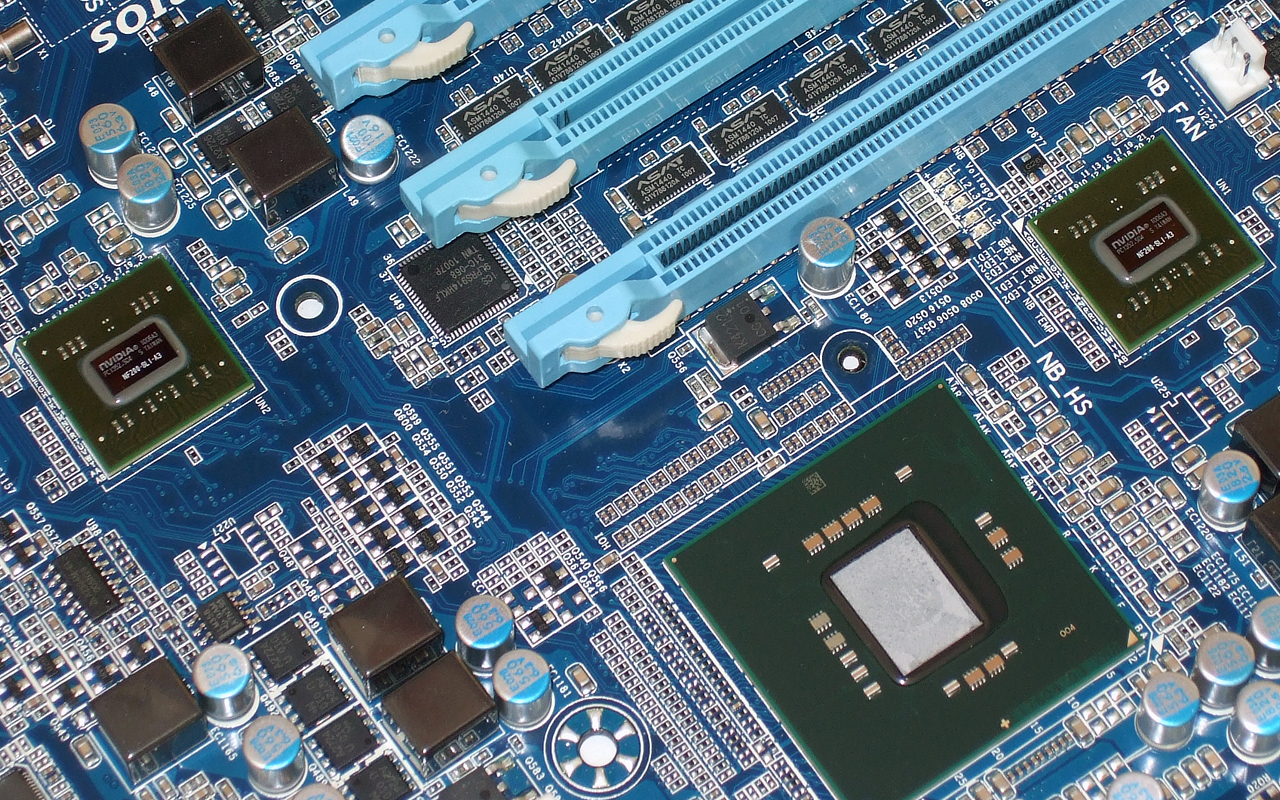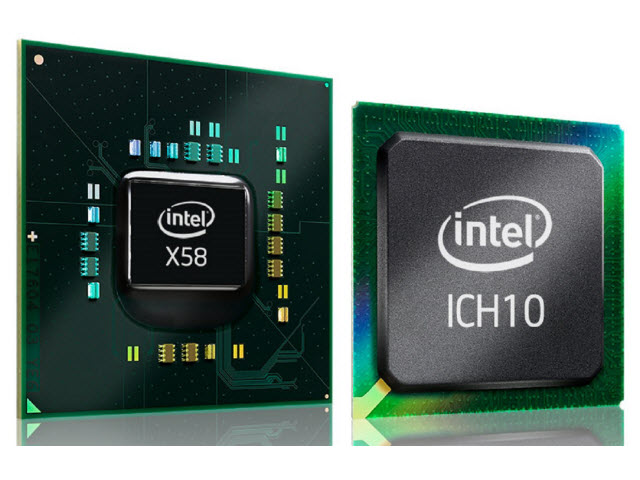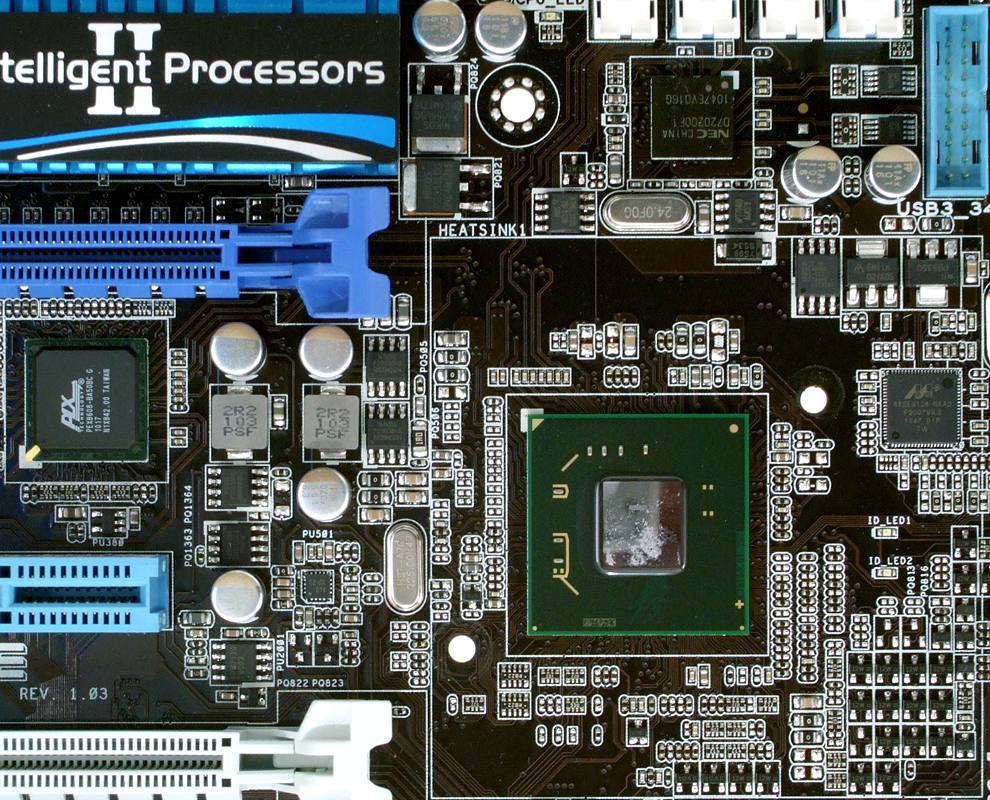History of Intel Chipsets
Intel's Experiment With RDRAM On Socket 370
Shortly after releasing its 810 family, Intel introduced the 820, 820E, and 840. These chipsets were designed to use Rambus DRAM (RDRAM), which led to numerous issues for both Intel and its customers. The 820 chipset should have launched at the same time as Intel's 810 series, but it was delayed due to issues with RDRAM. Instability continued to plague the 820 chipset, compelling Intel to replace it with the more refined 820E in mid-2000. The 820 and 820E chipsets could support up to 1GB of RDRAM at speeds up to 800 MHz. The 840 chipset, also released in late 1999, pushed this to 4GB of RDRAM.
Intel didn't bother with an iGPU on these chipsets, and opted instead to keep the AGP 4x connection open for high-end graphics cards.
These chipsets offered the best performance possible from Socket 370. The RDRAM, however, was significantly more expensive than SDRAM, and it ultimately pushed some people towards Intel's competitors as less-expensive alternatives.
Main new features:
- PCI 2.2 (1999)
- PCI-X/66 MHz (1999)
- AGP 4x (1999)
- RDRAM PC800 (Rambus) memory (1999)
Processors from this time:
- Xeon
- Pentium III
- Pentium II
- Celeron
MORE: Best CPUs
MORE: The History Of Intel CPUs
Get Tom's Hardware's best news and in-depth reviews, straight to your inbox.
MORE: The History Of AMD CPUs
Intel's 815 Chipsets
Identifying RDRAM's price as the reason some enthusiasts were eying competing platforms, Intel later released the 815 series in six different flavors. All of the 815 chipsets could support up to 512MB of SDRAM, similar to the 810 family, and they filled the gap between 810 and 820 by offering a mixture of features. The 815 and 815E chipsets came with integrated graphics, but also exposed an AGP slot, making them popular with gamers. The 815E supported two processors, creating a less expensive option than the 820 for servers and workstations.
The 815G and 815EG chipsets also bundled an iGPU, but they lacked AGP connectivity. The 815P and 815EP chipsets went the other direction, exposing AGP slots but no integrated graphics. Due to the versatility of Intel's 815 chipsets, they ultimately became the most popular and successful solutions for Socket 370 motherboards.
Processors from this time:
- Xeon
- Pentium III
- Pentium II
- Celeron
MORE: Best CPUs
MORE: The History Of Intel CPUs
MORE: The History Of AMD CPUs
Early Pentium 4 Chipsets
Intel's Pentium 4 arrived in November 2000, and with it a new platform: the 850. This chipset had a quad-pumped 100 MHz FSB similar to the 820's, yielding an effective 400 MHz. Similarly, it mandated the use of RDRAM. The higher bandwidth provided by RDRAM was integral to maintaining the Pentium 4's performance, since it employed a relatively long pipeline that needed to be kept fed with lots of data. But this also proved problematic for adoption, as RDRAM continued to be relatively expensive.
Intel also produced the 860 chipset exclusively for Xeon processors that also relied on RDRAM.
Processors from this time:
- Pentium 4
- Celeron
MORE: Best CPUs
MORE: The History Of Intel CPUs
MORE: The History Of AMD CPUs
DDR Arrives To Save Intel
From 2000 until 2002, Intel continued to push platforms with RDRAM. Anyone looking for a less expensive PC was forced to consider older Pentium III-based machines or something powered by AMD. Not surprisingly, AMD's market share grew during this period.
Fortunately for Intel, the DDR SDRAM standard had recently been finalized, and the company was able to release its 845 chipset with support for this technology in early 2002. DDR memory operating at an effective 400 MHz in a single-channel configuration was able to match the performance and bandwidth of RDRAM, but at a much lower price. By switching to DDR and introducing chipsets with dual-channel memory controllers in 2002/2003, Intel was able to make its PCs considerably more affordable while also increasing performance. On several desktop platforms, memory support was extended up to 4GB.
Intel also revamped its graphics technology, leading to the Extreme Graphics and Extreme Graphics 2, introduced in 2001 and 2003, respectively. These iGPUs were similar to Intel's previous generation, but improved to support DirectX 7.0. They could also access up to 64MB of system memory.
Other notable introductions during this time were the first integrated USB 2.0 controllers, the arrival of AGP 8x, and the first SATA ports.
Main new features:
- 533 MHz FSB (2002), 800 MHz FSB (2003)
- PCI 2.3 (2003)
- DDR266, DDR333 (2002), DDR400 (2003)
- USB 2.0 (2002)
- 16GB Memory Support (2003)
- AGP 8x (2003)
- SATA 1.5 Gb/s (2003)
Processors from this time:
- Pentium 4, Pentium 4 Extreme Edition
- Pentium D
- Celeron D
MORE: Best CPUs
MORE: The History Of Intel CPUs
MORE: The History Of AMD CPUs
Chipsets for Pentium D and Pentium Extreme Edition
By 2004, Intel had introduced no fewer than 20 desktop and nine mobile 800-series chipsets to support its Pentium 4 based processors. When the Pentium D was released that year, the company started shipping 900-series chipsets as well. Only a couple of years later, there were a total of 32 desktop and 14 mobile chipsets available for Pentium 4 and Pentium D CPUs. As a result of Intel's extreme segmentation, we're forced to switch modes and focus only on the most noteworthy models in its portfolio.
The 900-series line-up embraced DDR2, which would more than double memory bandwidth as clock rates pushed towards 1066 MHz. The 945 chipset, released in 2005, upped that ceiling to 1333 MHz. Intel again improved its iGPUs, this time by doubling the number of pixel pipelines to four and by nearly doubling their operating frequency. These integrated engines were branded as Graphics Media Accelerator (GMA) 900 and 950. Gamers were treated to the first PCIe-based discrete graphics cards around this time, which quickly replaced the AGP interface.
First-gen SATA evolved into SATA 3Gb/s, and was built into 900-series chipsets in 2005.
Main new features:
- 1066 MHz FSB (2004)
- DDR2-533 memory (2004), DDR2-667 (2005)
- SATA 3Gb/s (2005)
Processors from this time:
- Pentium 4, Pentium 4 Extreme Edition
- Pentium D
- Celeron D
MORE: Best CPUs
MORE: The History Of Intel CPUs
MORE: The History Of AMD CPUs
The First Core 2 Chipsets
Core 2 Duo's introduction in 2006 saw Intel release an additional eight desktop and six mobile chipsets in the 900-series. These new CPUs were supported on some of the older 900-series platforms after a BIOS update, giving owners of Pentium D-based PCs an easy upgrade path.
Not much changed in terms of functionality, though. USB 2.0 and SATA 3Gb/s support was extended to increase port count on certain chipsets, but everything else remained the same. One area Intel did emphasize was its integrated graphics hardware, resulting in the GMA X3000. The company reworked its architecture, shifting from GMA 3000's fixed-function pixel/vertex shaders to eight programmable execution units. The increase in resources and improved design helped performance quite a bit.
Processors from this time:
- Pentium 4, Pentium D
- Celeron D
- Core 2 Duo, Core 2 Extreme
- Core 2 Quad
- Pentium Dual-Core
MORE: Best CPUs
MORE: The History Of Intel CPUs
MORE: The History Of AMD CPUs
The Later Core 2 Years
Most Core 2-compatible chipsets used DDR2 memory. DDR3 support was added starting with P35 and G33, though. The new memory standard had just been introduced, and it started by offering similar real-world performance as the fastest DDR2 spec. Intel's X48 chipset, launched in 2008, officially worked with DDR3-1600, extending the advantage over platforms with DDR2-1066 or DDR3-1333 compatibility.
This generation of chipsets heralded the introduction of PCIe 2.0, which provided significantly more bandwidth for graphics cards. Intel rolled out several new iGPUs, too. It resurrected old graphics technology as the entry-level GMA 3100 with four pixel pipelines, and re-spun GMA X3000 as the GMA X3100 and X3500. A higher-end solution with 10 EUs was also produced as the GMA 4500, GMA X4500, GMA X4500HD, and GMA X4500MHD.
Main new features:
- 1333 MHz FSB (2007)
- PCI Express 2.0 (2007)
- DDR3 (2007)
Processors from this time:
- (Pentium 4, Pentium D)
- (Celeron D)
- Core 2 Duo, Core 2 Extreme
- Core 2 Quad
- Pentium Dual-Core
MORE: Best CPUs
MORE: The History Of Intel CPUs
MORE: The History Of AMD CPUs
Intel's Mainstream 5-Series Chipsets
Intel's Nehalem architecture integrated memory control into the CPU die, leaving little reason for a traditional northbridge.
Although the high-end X58 chipset continued to employ a two-chip approach, mainstream Core CPUs with on-die memory and PCIe control relied on a single-chip Platform Controller Hub, incorporating southbridge functionality and communicating with the CPU through a Direct Media Interface offering 10 Gb/s of bandwidth.
Here, Intel significantly simplified its chipset line-up. Whereas there were 17 chipsets for the second generation of desktop Core 2 processors, LGA 1156-based CPUs connected to one of four different PCHes. Five other chipsets served the mobile market, but that was still less than Intel's second-gen Core 2 platform portfolio.
P55, H57, and Q57 were essentially the same, exposing eight lanes of PCIe 2.0, six SATA 3Gb/s ports, and and 14 USB 2.0 ports. The P55 chipset lacked support for Intel's Flexible Display Interface, while the Q57 PCH added business-oriented functionality like vPro technology. A fourth PCH, H55, was intended as a budget-friendly solution with two fewer PCIe lanes and less USB 2.0 connectivity.
Main new features:
- PCH (Platform Controller Hub)
- DMI Interface
- SATA 6 Gb/s (2009)
Processors from this era:
- 1st-Gen Core i3, Core i5, Core i7 Processors
- Pentium
- Celeron
- Xeon
MORE: Best CPUs
MORE: The History Of Intel CPUs
MORE: The History Of AMD CPUs
Intel's X58 Chipset: An Enthusiast Platform
Intel's X58 platform was the only option complementing LGA 1366-based Core i7s. It differed from Intel's mainstream chipsets in several ways. For instance, rather than connecting to a PCH via DMI, high-end Core i7s attached to the X58 IOH through a 25.6 GB/s QuickPath Interconnect. That I/O Hub, responsible for exposing up to 36 lanes of PCIe 2.0 for add-in cards, hooked up to a southbridge-like ICH10 with SATA 3Gb/s, USB 2.0, and software-based RAID via DMI.
Main new features:
- IOH/ICH Architecture
- Triple-Channel Memory Controller
- QPI (QuickPath Interconnect)
Processors from this era:
- 1st-Gen Core i7 and Xeon Processors
MORE: Best CPUs
MORE: The History Of Intel CPUs
MORE: The History Of AMD CPUs
Intel's 6- And 7-Series Chipsets
The arrival of Sandy Bridge-based Core CPUs coincided with Intel's Couger Point chipset launch in 2011. It introduced the P67 and H67 platforms to support those LGA 1155-based processors, but ultimately recalled them due to a bug with their SATA controller. Replacements didn't arrive until later in the year.
Cougar Point chipsets were divided into two groups: consumer and business. The former category included H61, H67, P67, and Z68 PCHes, while the latter category included B65, Q65, and Q67. The most feature-rich solution was Intel's enthusiast-oriented Z68, which boasted eight PCIe 2.0 lanes, two SATA 6Gb/s ports, four SATA 3Gb/s ports, and 14 USB 2.0 ports. It also featured support for overclocking, RAID 0/1/10, and the ability to split PCIe connectivity up between multiple GPUs. Most other chipsets (excluding Q67) were watered-down variants of Z68. Q67 lacked overclocking support, but it otherwise maintained feature parity with Z68. It also exposed a number of business-oriented features not available via Z68.
All LGA 1155-compatible chipsets connected to the CPU over an improved DMI 2.0 link capable of roughly 2GB/s of bandwidth. Later, with the introduction of the Panther Point platforms and Ivy Bridge processors, Intel integrated a USB 3.0 controller into its PCHes. All 7-series chipsets can support up to four USB 3.0 ports as a result. Ivy Bridge CPUs also saw the introduction of PCIe 3.0.
Main new features:
- DMI 2.0
- USB 3.0
- PCIe 3.0
Processors from this era:
- 2nd- And 3rd-Gen Core i3, Core i5, Core i7 Processors
- Pentium
- Celeron
- Xeon
MORE: Best CPUs
MORE: The History Of Intel CPUs
MORE: The History Of AMD CPUs
-
abryant Archived comments are found here: http://www.tomshardware.com/forum/id-3562448/history-intel-chipset.htmlReply -
richardvday Page 8 Business Pentium ChipsetsPicture 8 of 29Reply
With the Pentium's introduction, Intel began segmenting its products to a greater degree than it had done previously. In total, the company created seven chipsets for the Penitum -
almarcy I attended an Intel training session that introduced the 8008 and 8080. Their Field Training Engineer told our class that Intel's research had found that every 10 degrees Fahrenheit (!?) the ambient temperature was reduced doubled the useful life of the chip. Some things have changed. Not all. I never imagined 32 threads on sixteen cpus on one chip. No imagination, then ;) AMD, now.Reply -
tanngate I started my foray into computer building with the 8088s. Guess that makes me a dinosaur now lolReply -
stdragon Some of you may remember the odd COAST (Cache On A STick) modules. But there was a stranger one yet. It was for the iGPU built-in to MBs with the Pentium 3 i815 chipset. There as an actual memory module that slotted in the AGP slot. It was known as a "Display Cache Module" or "AGP Inline Memory Module (AIMM)". I used one back when I had an AOpen AX3S Pro. See the link below for more info on this odd piece of hardware.Reply
https://en.wikipedia.org/wiki/AGP_Inline_Memory_Module
-
pensive69 high5! I started my foray into computer building with the 8088s. Guess that makes me a dinosaur also.Reply
the real issue is that i still have all these darn chips in the old parts bins.
:) -
qmechanic Back in the days of the old Pentium processors, and for a time after, Intel was not the exclusive producer of chip sets for their processors. Time has faded my memory considerably, but back in the early days, Intel chipsets were not the ones to have for best performance. Companies like Via, AMD, and Nvidia made north bridge chipsets for Intel processors that seemed to have a performance advantage over the Intel chips. Any chance of seeing an article on that? I was in the military and deployed during the time these manufacturers stopped producing chips for Intel processors but I remember something about a suit filed by Intel which is why Intel is now the ONLY manufacturer of chipsets for their processors..?Reply
Thanks for bringing back the memories! Great article! -
stdragon Intel, AMD, and VIA were the gold standard. nVidia and SiS were essentially garbage chipsets that I can recallReply

